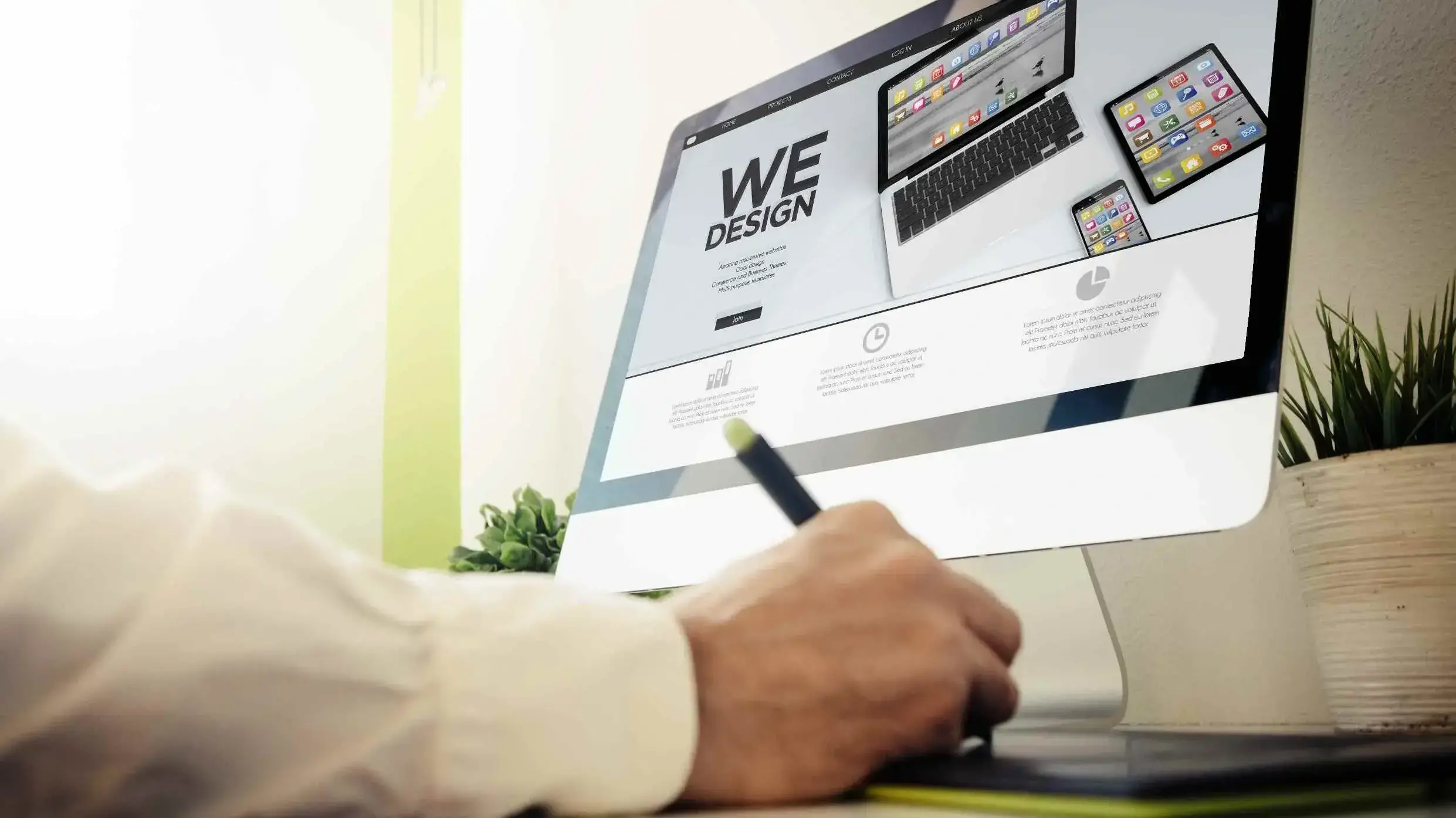The terms graphic design and web design seem to refer to the same things, but in reality, they are very different. Although the skills required do overlap, the ability to do one doesn’t mean you can do the other. If you’re trying to decide which is right for your needs, or just want to understand them more, you’ve come to the right place. In this post, we’ll examine graphic design vs web design to help you understand their differences and similarities, and help you decide which is right for you.
What is Graphic Design?
Graphic design uses graphics, illustrations, images, logos, social media images, typography, marketing materials, and graphs to communicate visually. Designers work in print and digital media and only work with the graphical elements of both mediums.
Graphic designers can use any medium they prefer and create work in any size they want. They can work in physical media and digitize it or work with all digital media. Most use software as their primary toolset. Graphic designers must know how to use image editing software such as Adobe Photoshop. However, any image editing software with a good set of features works great for graphic design. For the best results, a graphic tablet with a pen are essential tools.
For more information about programs for graphic design, see the article 14 Best Free Graphic Design Software Programs for 2023.
Graphic Design Examples
The example below is from Adobe Photoshop Elements in expert mode. It includes a canvas where you can create with the design tools. I’m working on a poster that I can print.
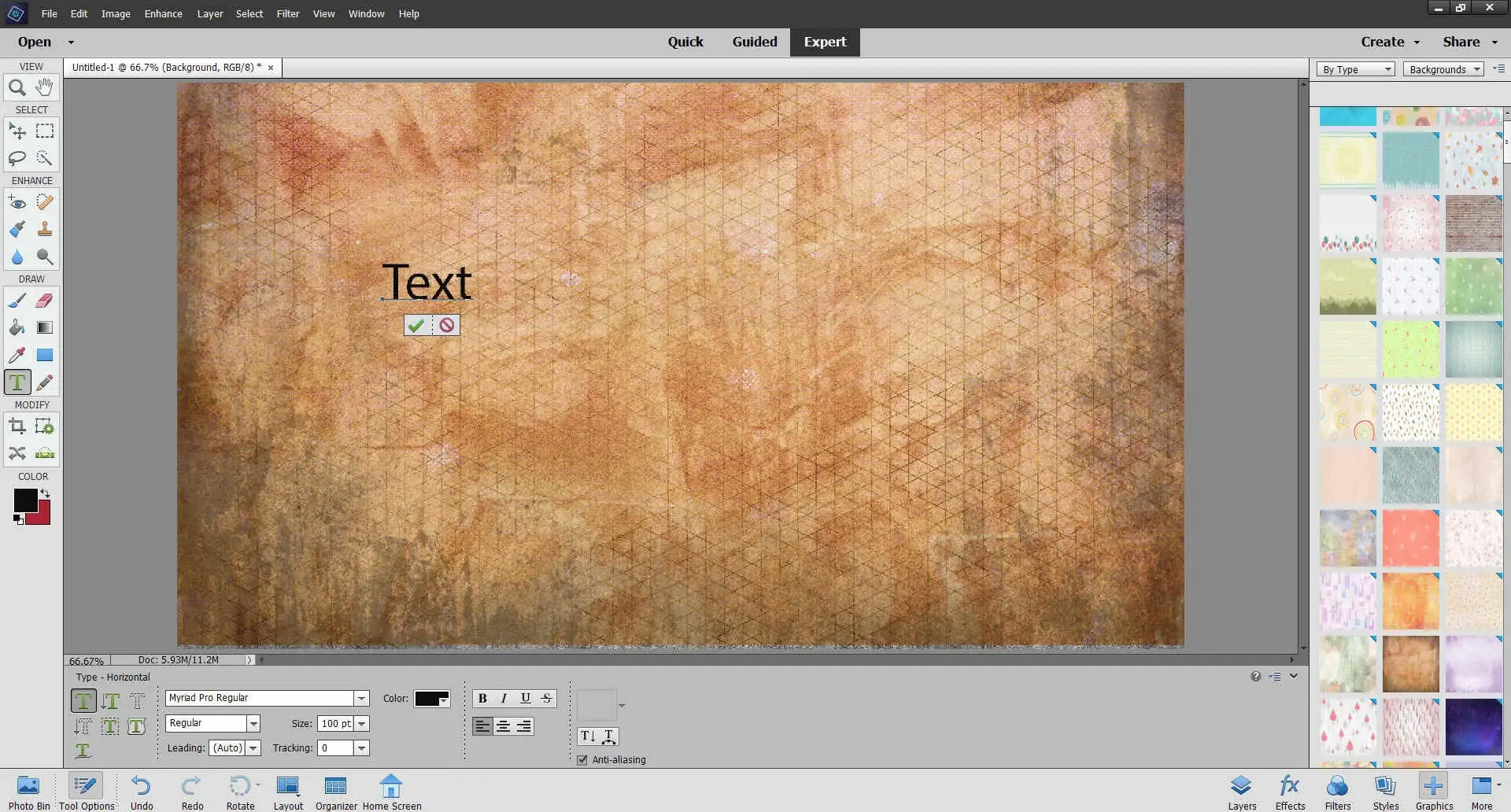
The example below is from Canva. It’s an online design suite that includes tools to create all types of graphical designs for flyers, posters, greeting cards, shirts, and lots more. I’m working on a design for a flyer that can be printed.
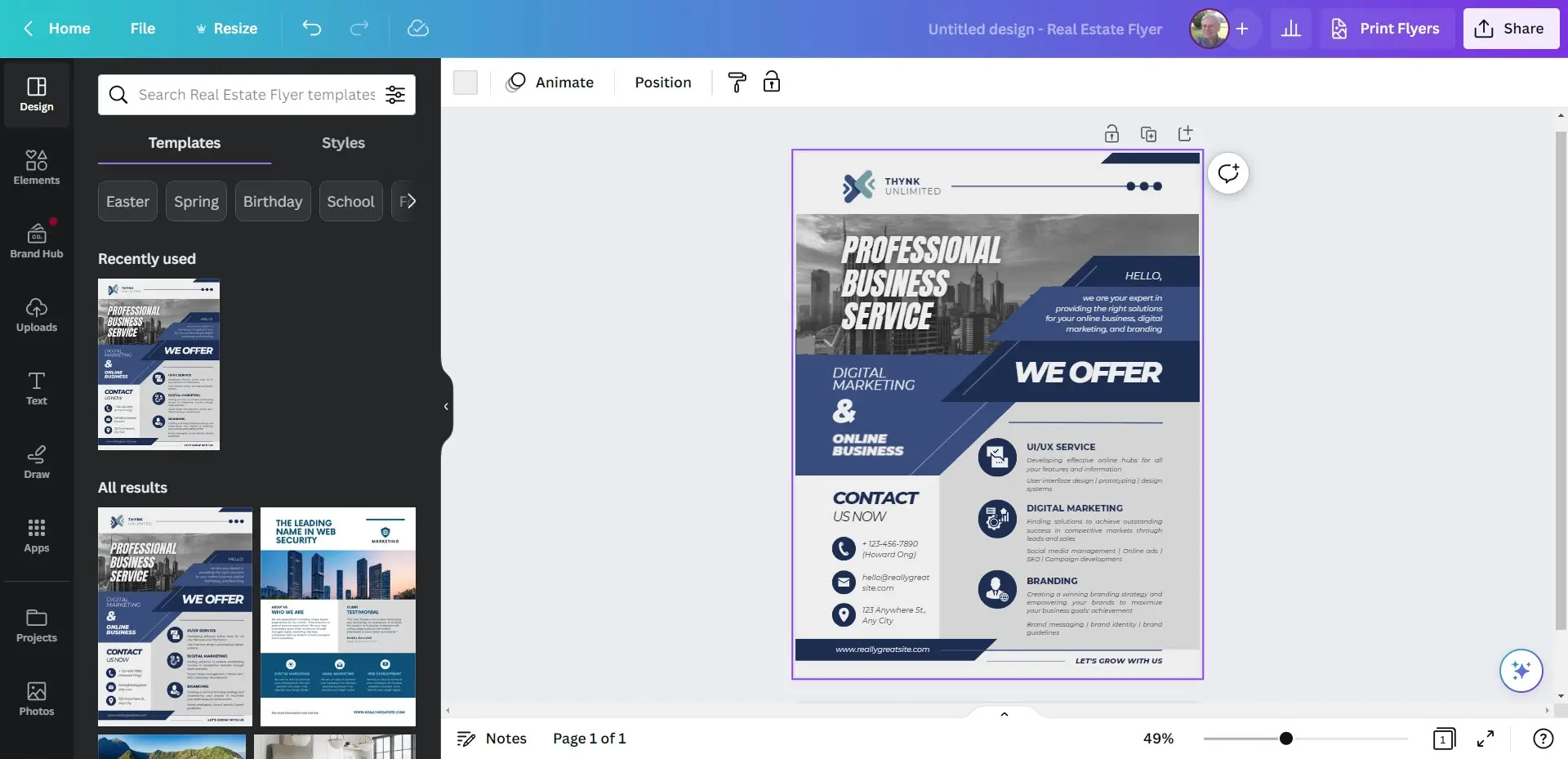
What is Web Design?
Web designers create, improve, and maintain websites. Web design works similarly to graphic design. It includes graphics, illustrations, images, typography, and graphs to communicate visually, but only for the web. It does not consider printed media. It’s the look and feel of the website with a focus on UI (user interface) and UX (user experience). Graphic design can, and most likely will, be used on a website, but they’re placed on the website by a web designer.
Web design also includes programming. Web designers need to know HTML, CSS, file types, image sizes, optimizing and compression technologies, testing and making improvements based on those tests, etc. They must be familiar with web technologies and know how to deliver file sizes based on load time requirements. The WordPress theme and plugin code editors and CSS editor are popular coding tools, but offline tools are also useful.
Web designers must know how to use their platform of choice, such as WordPress, to create backgrounds, patterns, buttons, typography, animations, overlays, and more. Anything that can’t be created with these tools requires knowledge of image editing tools such as Photoshop, which gets into the realm of Graphic design. Designs must load quickly and respond to the screen size and shape. Web design must consider the file size, file type, image resolution, and more.
Web designers work with web developers. Desgners often provide wireframe designs for developers to build. Code, such as PHP and JavaScript, is done by web developers.
For more information about web design, see the articles Storytelling in Web Design: Tell a Story to Keep Visitors Engaged and Visual Hierarchy in Web Design: A Guide to Creating Effective Layouts.
Web Design Examples
The example below is from the WordPress Gutenberg editor. It includes tools to place and style all types of graphical elements. I’ve added a button and adjusted the font size, font color, and background color using the Gutenberg tools.
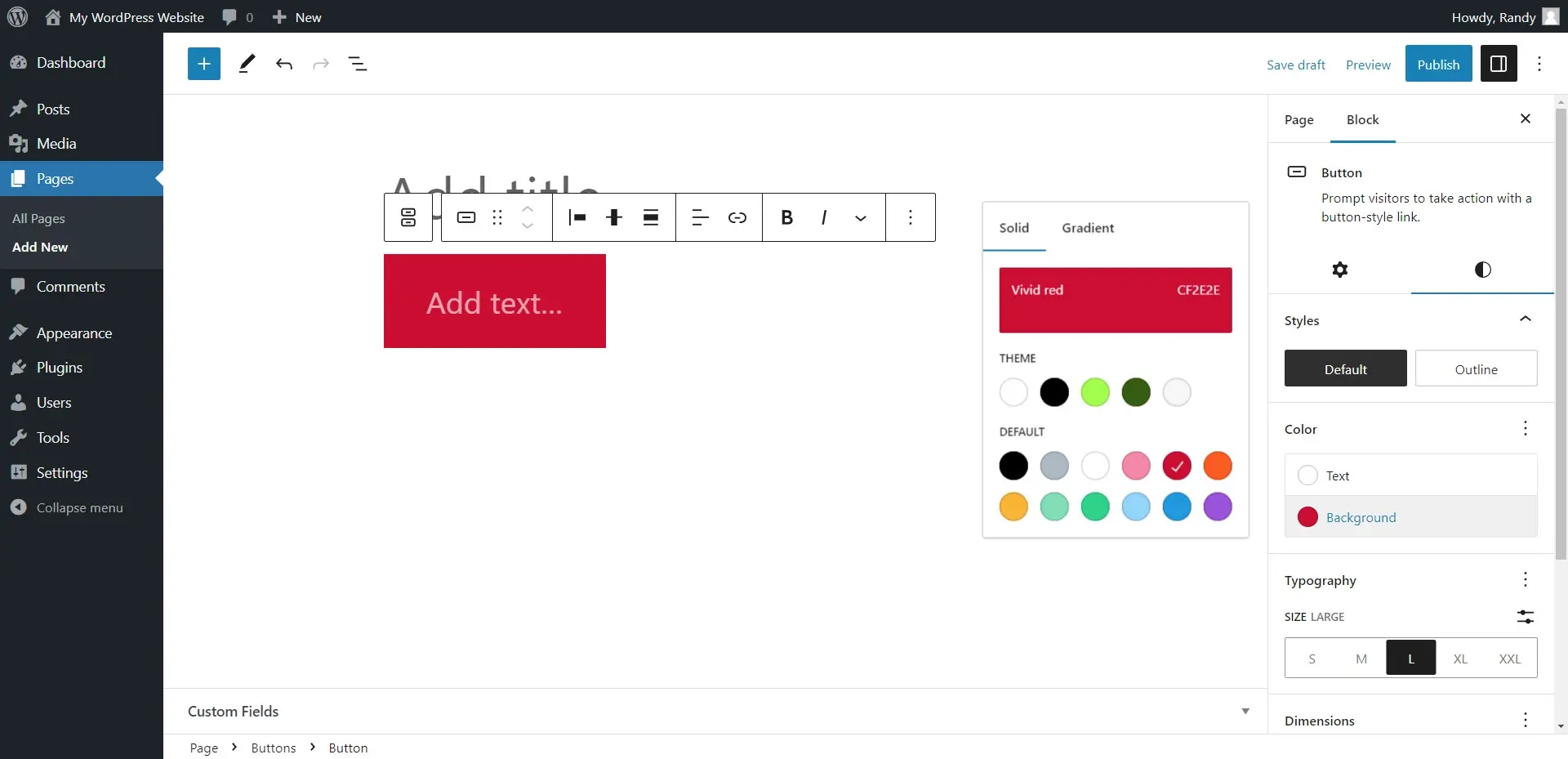
The example below is from Divi (a drag-and-drop WordPress page builder). It includes tools to design lots of graphical elements and style them. In this example, I’m editing a button using the sliders and color selectors.
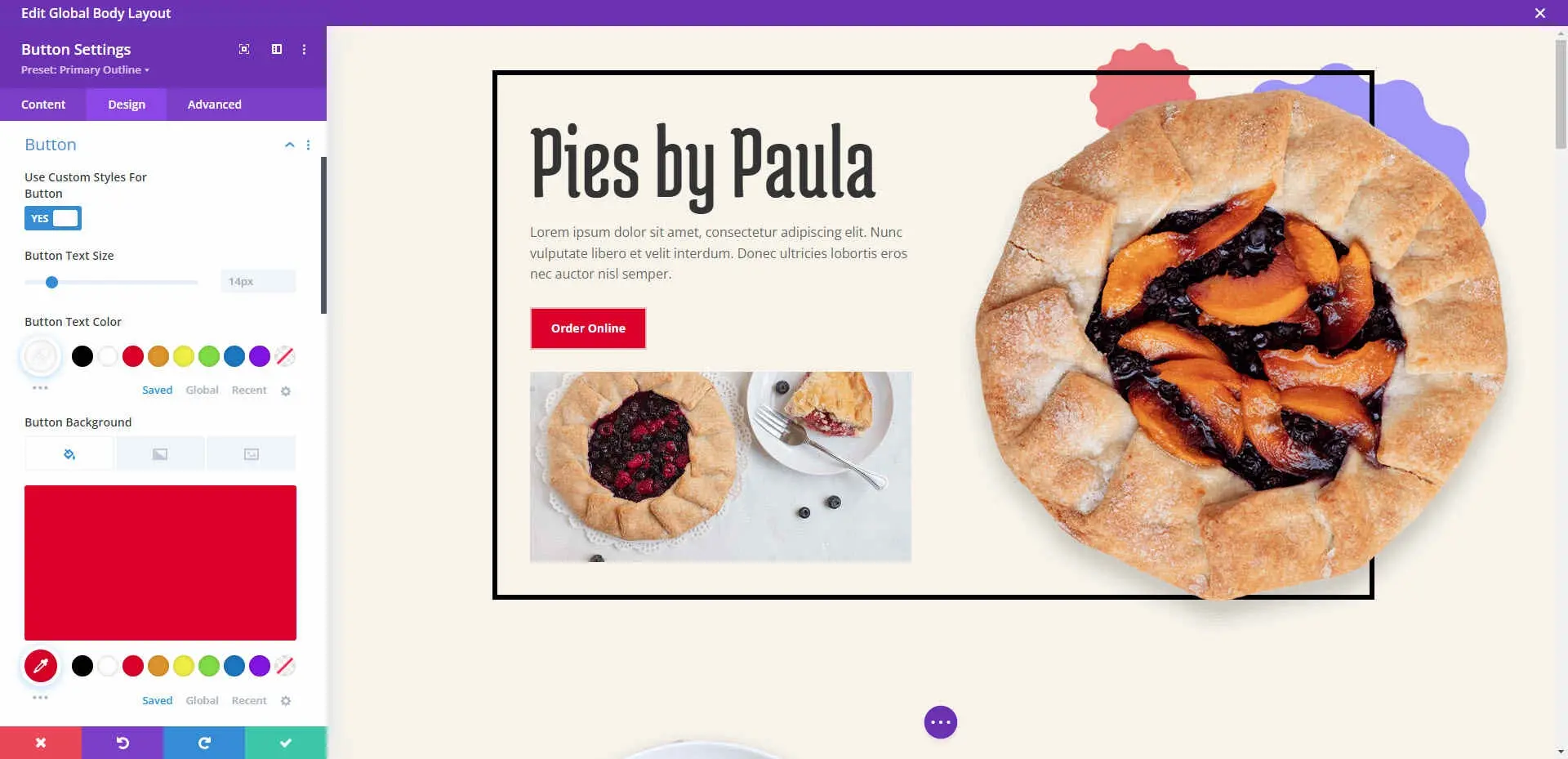
Similarities Between Graphic Design vs Web Design
Although there are several differences between graphic design and web design, there are also a lot of similarities. Before we look at how they’re different, let’s see how they’re similar. Here are the main similarities to consider between the two roles. Learning these skills and concepts is a great place to start in either role.
Design Concepts
Regardless of which task a person performs, the design concepts are the same. The rules of color, typography, images, patterns, negative space, and graphics still apply. Knowledge of one type of design practice transfers to the other. Both include common design trends such as brutalist design, minimalist design, and maximalist design. Even Google’s Material Design, which was developed specifically for apps and the web, follows the same ideas as graphic design.
Digital Tools
Both design concepts require a solid knowledge of digital tools. In some cases, those tools overlap. For example, logos and graphical illustrations can be designed in Photoshop regardless of whether they’re meant for print or the web. As we’ll see, the final product may be different, but the tools are sometimes the same.
Freelance or Fulltime
Finding work for both design concepts is similar. You can freelance and find work by contacting companies directly, agencies, or using an online job service. Or you can get hired by a company to work full-time. Both jobs pay well.
Client Communication
Both types of design require the designer to ask the right questions and communicate well with the client. Both designers need to understand the subject matter, subgenres, and audience. They need to understand the purpose of the design and know how to design for that purpose.
Visual Communication
Regardless of the medium, the role of a design is to communicate with the audience and solve a problem. Both communicate information visually. Whether it’s for entertainment, information, or advertising, the designs need to communicate a message to the user. Graphic design often attracts attention or informs the reader so they can make a decision. Web design usually attempts to convert the user into a customer.
Differences Between Graphic Design vs Web Design
Now that we have an idea of the main functions of graphic design vs web design and how they’re similar, let’s look at the main differences between them to help us understand graphic design vs web design.
Static vs Dynamic
Simply put, graphic design is static (permanent) while web design is dynamic (changing).
Graphic design is finalized and printed. Once a graphic design is complete, it’s printed on physical media, so it doesn’t change. It’s printed in magazines, cereal boxes, shirts, hats, greeting cards, posters, mugs, calendars, and in books. It’s not interactive. Graphic design is static unless it’s added to a website and is animated, which brings it into the work of web design.
Web design is interactive. Buttons must be clickable. Images often act as links and sometimes display an overlay when the cursor hovers over them. They can include animations. Web design must change as needed to suit the requirements of the screen and the actions of the user. It’s not permanent. Web design is dynamic.
Graphic Design vs Web Design Require a Different Skillset
Graphic designers don’t need to know how to program, choose colors for screens, create designs that adapt to different screen sizes, etc. It doesn’t require a lot of limitations. Web designers must learn to create around these constraints.
Finished Product vs Ongoing Product
Once the work is finished, the work involved with graphic design is done. It doesn’t need to be maintained or updated. Once the project is completed, the graphic designer moves on to the next project. If something does need to be updated, it would be a new printing. So, there are a lot of time and cost factors involved in making an update. Mistakes can be costly.
Web design is never finished. There are always themes, plugins, and even WordPress to update. Sometimes the updates are minor adjustments. Sometimes images, graphics, colors, or typography will need changes. Other times, the overall design itself will need a complete change. Designs should be tested and improved. It’s always ongoing and needs to be maintained. Fortunately, updates are often simple and inexpensive.
File Types and Sizes
Graphic design isn’t concerned with file types or file sizes. Graphic designers can create in any size with just about any file type. The size of the file is irrelevant to the end-result. Certain companies do specify requirements for their own needs, however, but those requirements often provide an upper limit with a common file type. However, file quality is the goal. Typically, the larger the file size the better. Printed media usually targets 300DPI (Dots Per Inch). This quality isn’t limited to the output on the screen. Once the graphics are printed on a tee shirt, it doesn’t matter what the file type or size was. It doesn’t affect the end user.
File types and file sizes are a major concern for web design. Images, as well as all graphics, need to be resized to reduce load times. They need to scale to fit the screen size. Images for the web usually target 72DPI. This can make images on the web appear blurry or pixelated. This can be offset with high-quality compression techniques, but screens display far fewer pixels than printed images, so more pixels wouldn’t help anyway.
Typography
Graphic designers only need to install the typeface, or font family, on their computers to use them. like images and other graphics, the quality of the output isn’t dependent on the screen resolution. The typeface will look the same in print as it was designed. In other words, it will sit in the same location, include the same colors, and be the same size as it was created unless the entire graphic is resized. Graphic designers can also create their own typography if needed without having to design the entire font family.
Web design is still limited when it comes to typography. There are lots of font families to choose from, and they’re available in many sizes and weights. Web designers can style them with CSS. WordPress and themes specify a default font, but designers can select a different font from the built-in list. They can also add more fonts, such as Google Fonts, and upload their own. These are added through CSS and will display in the order specified. Some fonts will need to be stored locally while others can pull from a server. If a user’s browser doesn’t support a font that’s been added, then the browser will display the default font. Web designers will need to specify a font to use as the default font stack. Ultimately, the typography is limited to what the user’s browser can display.
Demand for Work
When considering one of these design fields as a career, I recommend looking at the Bureau of Labor Statistics website. Regardless of where you are in the world, it provides a good indication of the demand of any field of interest. The current outlook projections cover 2021-2031. According to the Bureau of Labor Statistics, graphic design isn’t as in demand as web design.
Demand for graphic design is predicted to increase by 3%, which is much slower than average. Image from BLS.gov, retrieved April 6, 2023.
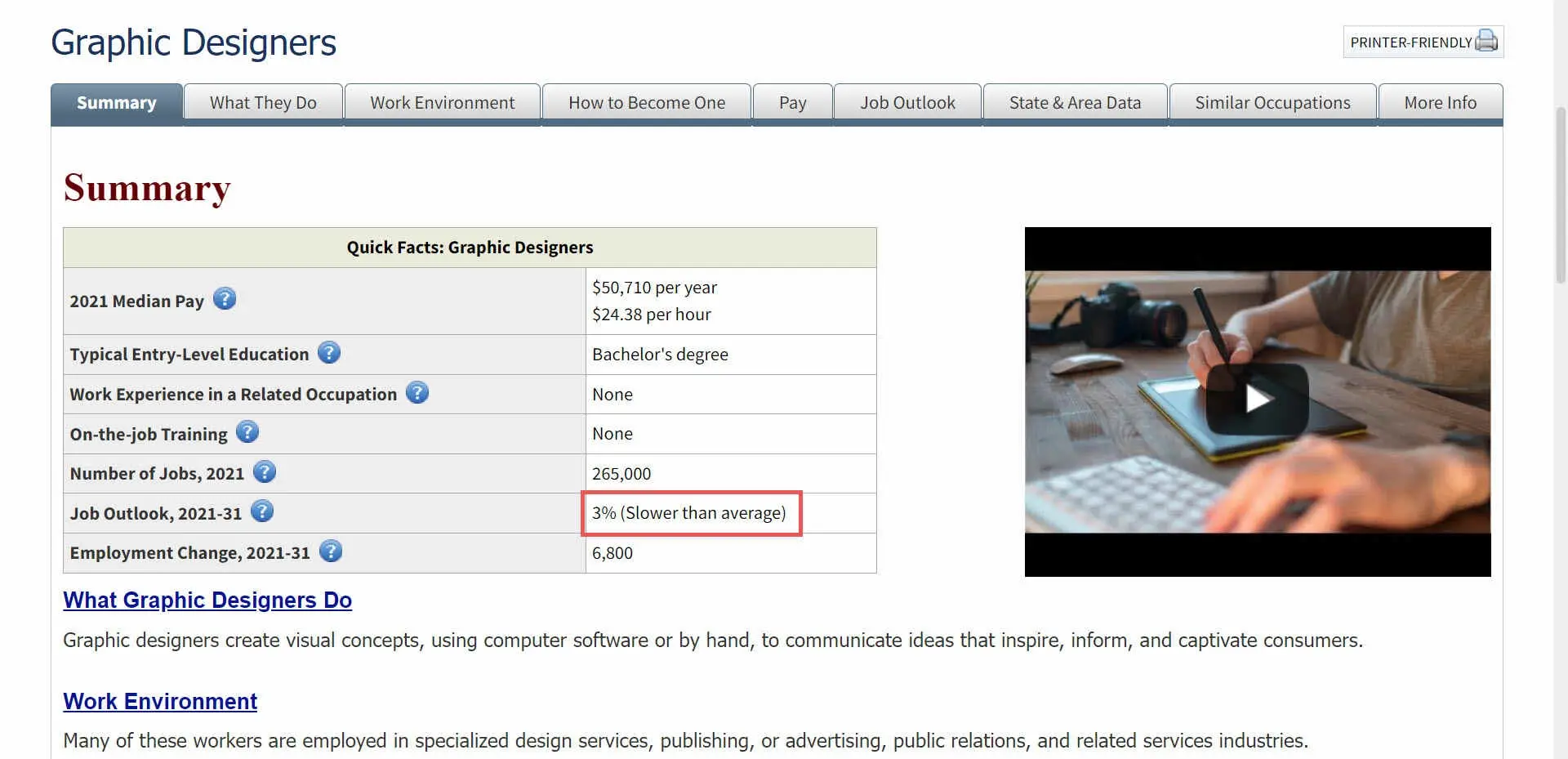
Web design is predicted to increase by 23%, which is much faster than average. Image from BLS.gov, retrieved April 6, 2023.
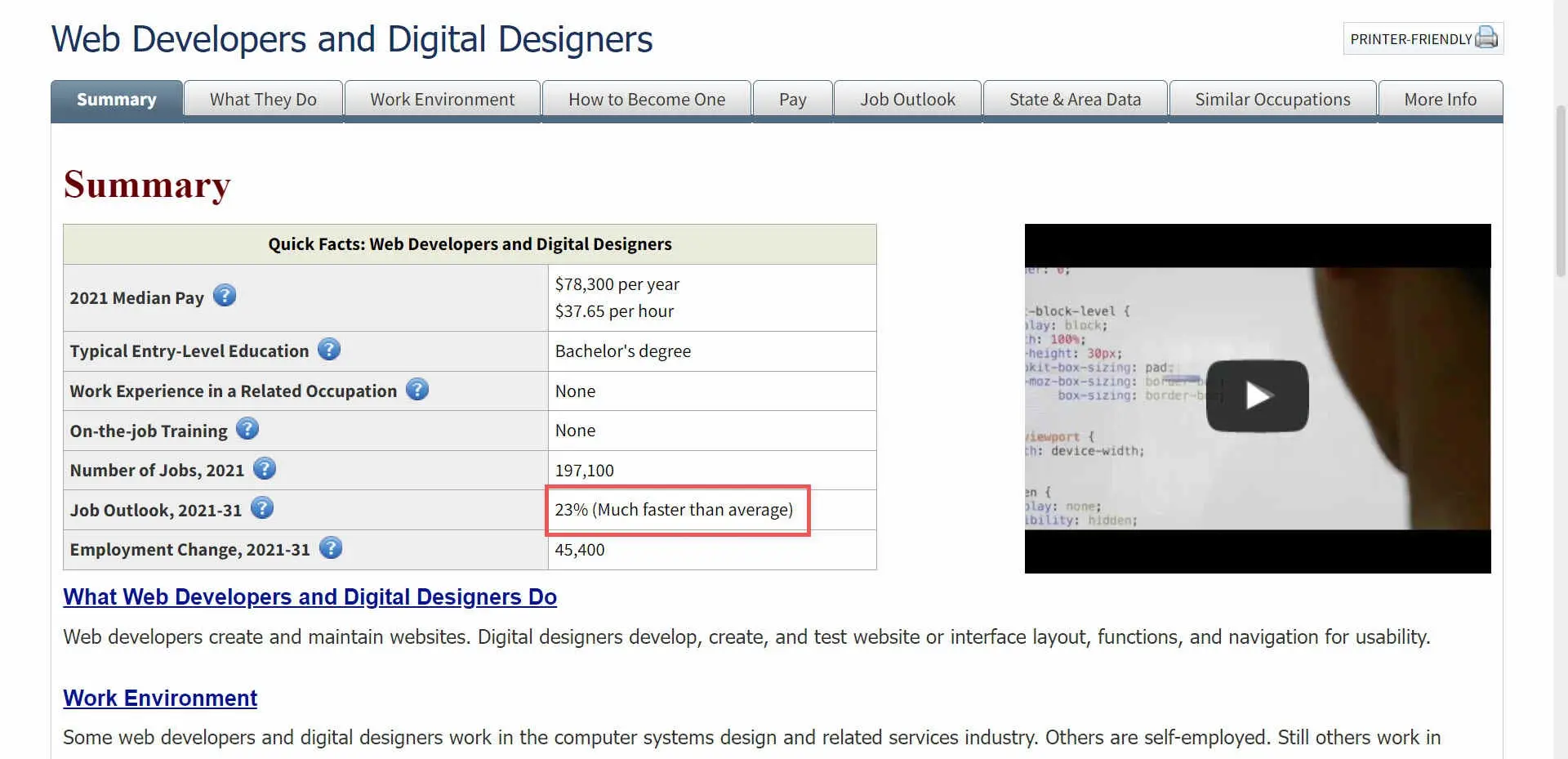
Ending Thoughts on Graphic Design vs Web Design
That’s our look at graphic design vs web design. The two are very different, yet they do overlap. Graphic design focuses on print, while web design focuses on the web. Although it seems like there’s more involved with web design, it’s more forgiving than graphic design. If you make a mistake in web design, simply change it. If you make a mistake in graphic design, it might require lots of time and money to reprint the material, and printed material with the mistake can haunt a company for years. Ultimately, both are important because they do different things.
We want to hear from you. Do you have anything to add about graphic design vs web design? Let us know in the comments.
Frequently Asked Questions
Why should I create a website?
There are many reasons why you should create a website if you’re an artist. You can use it to create a place where people can learn about you, talk about your art, or show off your work.
How do I choose a design for my website?
One of the most important things when creating a website for your art is the design. Even though your pieces of art might be amazing, people will leave if your site is hard to navigate. This is why it’s important that the site is easy on the eyes and easy to navigate.
Are website builders easy to use?
One of the easiest ways to build a website is with a website builder. Using a website builder doesn't require any programming and coding skills.
What are the best web builder tools?
Some of the best web builder tools are Wix, Squarespace, Weebly, Webnode, Webflow, Jimdo, Duda, GoDaddy Websites, Strikingly, Site123, Webstarts, and much more!

Randy A. Brown is a freelance writer from east TN specializing in WordPress and eCommerce. He's a longtime WordPress enthusiast and loves learning new things and sharing information with others. If he's not writing or reading, he's probably playing guitar.
View all posts by Randy A. Brown















